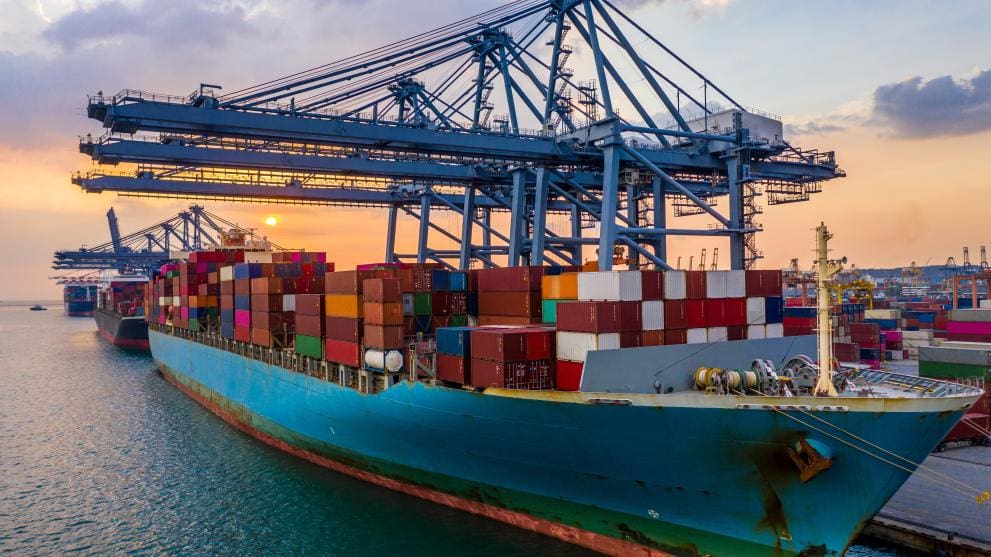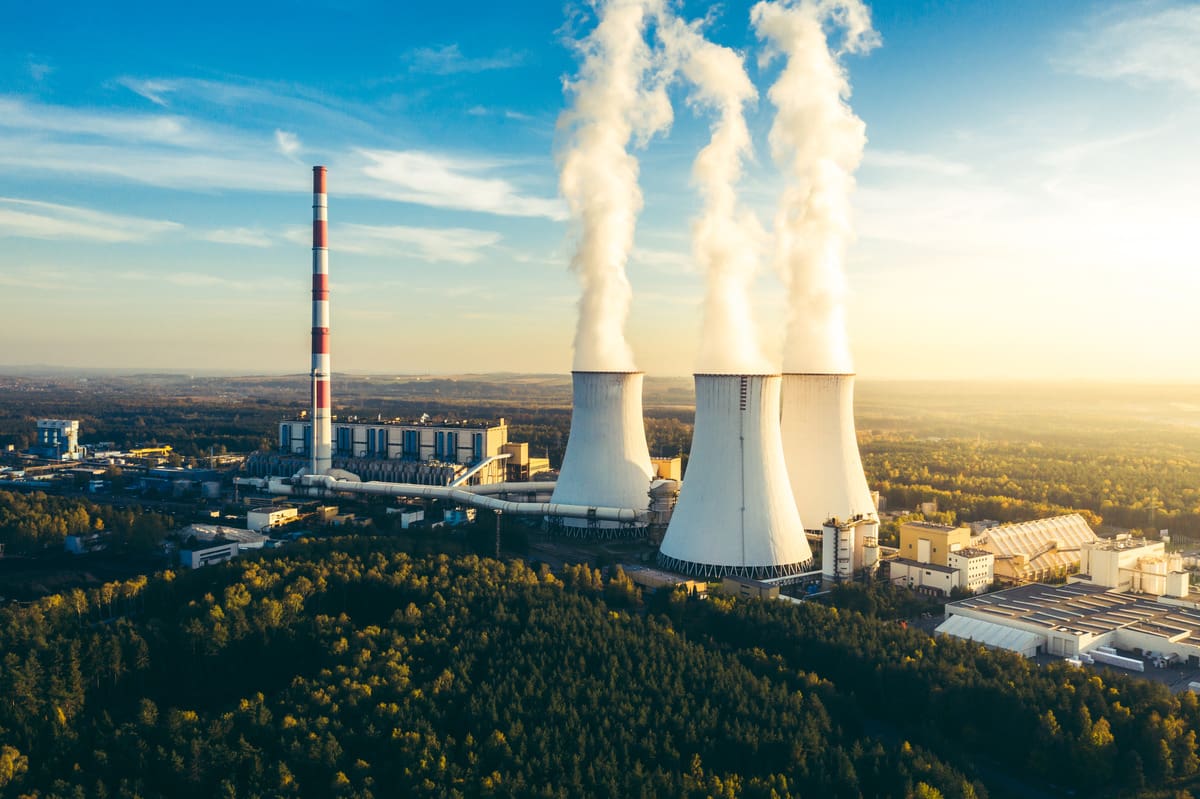‘Are the solutions to Eskom problems also the solutions to global energy challenges?’
The beginning of load-shedding in South Africa
“Where do I begin to tell the story of how ….” is the opening line of a famous Charlie Chaplin song that applies to the situation at Eskom today. Is the company beyond redemption and only continuing to exist because of the lack of an alternative and by virtue of the government’s continued substantial backing?
Eskom has enjoyed a monopoly on the generation, transmission and distribution of electricity in South Africa. According to Stats SA as quoted in the WOW report on Electricity Generation in South Africa, Eskom generated 88% of the country’s electricity in August 2022, and could have provided more if it had the capacity to generate more.
The state-owned entity is a hot topic for all South Africans, from those in business to homemakers working around the load-shedding schedule to make sure they are able to cook a complete meal before the power goes out. Eskom is in the news daily, for all the wrong reasons, from breakdowns to crime syndicates and high debt. The challenges date back to an era when Thabo Mbeki was President when he, the then Minister of Public Enterprises, Alec Erwin and Finance minister Trevor Manuel put on the back burner the much-needed investment in generation capacity. The problems are not abating, with little hope in sight for a satisfactory solution in the next two years at least.
Several reports have been written outlining possible solutions to unshackle the organisation that is holding the country’s economy to ransom.
Efficiency at Eskom
How does Eskom go back to being a productive and efficient organisation after decades of mismanagement, corruption, fraud, overstaffing, and alleged sabotage? A report by the World Bank stated that Eskom is overstaffed by a factor of 3.3 and that it can function with 14,200 employees yet currently has 47,600 on its payroll.
Businesstech of 9 September 2021 reported that Eskom’s average employee cost was R735,000, which is R61,250 per month, while the average take-home pay in South Africa was R14,600 (in June 2022) down from R15,570 six months earlier, according to Businesstech. The average civil servant salary is in the region of R440,000 (R36,700 per month).
Eskom’s performance does not correlate with its staff complement. Several reports have illustrated how Eskom is producing less electricity than it used to and continues to spend billions on underperforming assets. The GWh per Eskom employee from 1990 to 2021 shows how productivity has steadily declined in the last 20 years.
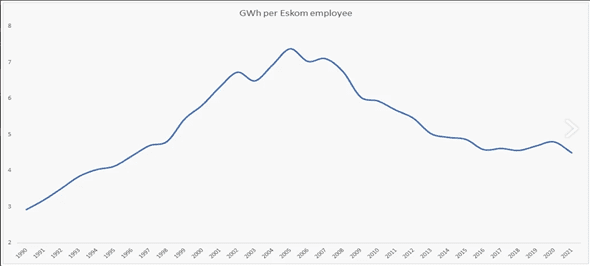
Eskom’s CEO, who resigned on 14 December, recently made several public comments that Eskom is not overstaffed, but that it would gradually reduce the number of employees to about 40,000 by 2030. This is a weak intervention compared to the World Bank estimated requirement of 14,200.
The other narrative coming out of Eskom is that South Africa’s electricity is still too cheap. The graph below illustrates Eskom’s tariff increase from January 1950 to January 2022 relative to inflation.
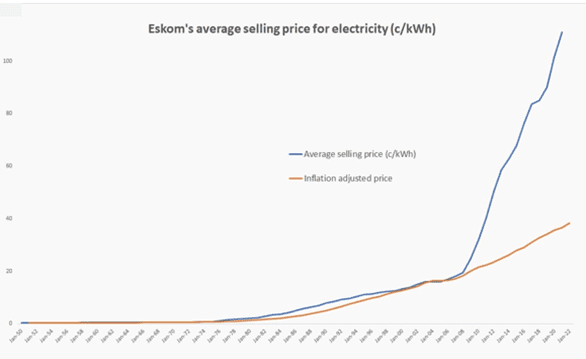
The CEO’s argument that electricity is so cheap that consumers are wasteful with the resource does not hold water, particularly when considering it is an input cost for most if not all industries, which are losing competitiveness, and many consumers are resorting to burning more polluting fuels (paraffin, wood, etc.).
Another narrative is that the aging generation units are the main culprits of the low energy availability factor (EAF). Yet as one of Eskom’s directors reported, “The oldest coal-fired power station in its fleet, Komati, achieved an average EAF of 65% over the last year. It is higher than the EAF of Eskom’s four newest power plants – Kusile at 33%, Medupi at 63%, Majuba 59%, and Kendal at 48% EAF.” Moreover, a comparison with equally aging power stations in the US illustrates Eskom’s poor performance. The EAF graph of two power stations in the US compared to those of South Africa tell a different story.

Extraordinary tariff increases have been implemented to make up for the momentous theft and corruption at the power utility.
The fourth narrative is the CEO’s recommendation to fiercely promote electric cars in South Africa, when we don’t have enough electricity for current needs and when the EU is fretting about where it will find the electricity to power its electric cars when internal combustion engine car production is stopped by about 2030 – and that was before the current energy crisis. It is also asserted that coal-generated electricity does not give electric cars an environmental advantage.
Electricity Generation for South Africa
With the world turning towards greener and renewable energy with great political enthusiasm, a lot of money is put on the table by rich countries to encourage developing countries to navigate this electricity generation transition.
Recently, the minister of Minerals and Energy, Gwede Mantashe, signed 15 power purchase agreements with the private sector, although electricity may not be immediately available to the grid due to transmission constraints, presenting an obstacle to the introduction of new renewables generation.
If privatisation is the quick fix and best solution, why is government dragging its feet in creating an environment conducive to investment and in implementing required regulations that will accelerate additional generation? Are the politicians worried about labour movements that might oppose privatisation for the fear of job losses? Surely there must be some trade-offs if the politicians are committed to finding sustainable solutions.
The 2019 Integrated Resource Plan (IRP) revision states that consideration should be given to all modes of electricity generation which can take place in the context of transitioning to greener energy. Technical experts the world over agree that the optimal plan for greener power generation would be to have a mix of several sources to augment the inconsistency of wind and solar supply and storage. The diagram below indicates the different sources of energy and their availability factor. Nuclear generation, which is as clean as solar, requires a bigger upfront investment but has the highest availability factor, the lowest operating costs and the longest economic lifespan. It should therefore be considered for the future mix, as long as there is strict waste management regulation that is monitored closely.
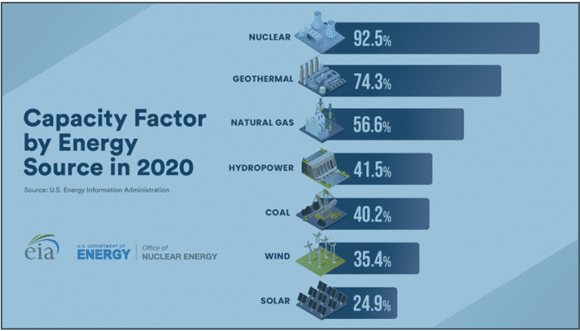
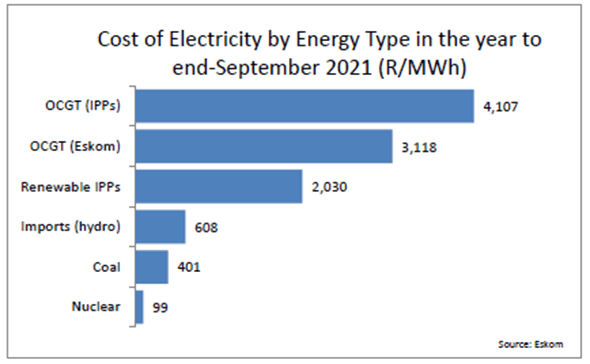
Market forces and innovations in electricity generation
The Ukraine-Russia war has upended energy costs. As a result, Germany is revoking a ban on nuclear energy. The EU also plans to include nuclear and gas into the green energy category.
The abrupt energy cost increase has spurred research and innovation into new and/or environmentally-improved energy sources with a move to smaller and less costly nuclear reactors.
Rolls-Royce is leading a consortium to build a fleet of mini-reactors, capable of generating 470MW, with £200m of government funding.
Emission reduction solutions for coal-fired power stations can extend their life by fitting them with carbon capture systems. This investment is a necessity given that EU countries intend to penalise imports produced by polluting energy sources.
Whichever option the South African government chooses, action needs to be taken and taken fast to put the economy back on track.
Contact us to access WOW's quality research on African industries and business
Contact UsRelated Articles
BlogCountries Electricity gas steam and air conditioning supplySouth Africa
South Africa’s Maritime Sector: Growth, Green Tech & Global Competition
Contents [hide] There is no doubt that the maritime transport sector is an important keg in the South African economic wheel. According to the Who Owns Whom report on maritime...
BlogCountries Electricity gas steam and air conditioning supplySouth Africa
The Energy Sector in Namibia: Projects, Investment & the Drive for 80 % Local Supply
Contents [hide] Namibia’s move towards reducing energy import dependency Who Owns Whom’s report on the energy sector in Namibia highlights the country’s forward-looking economic development policy addressing its dependency on...
BlogCountries Electricity gas steam and air conditioning supplySouth Africa
Can Independent power producers turn the tide in electricity generation for South Africa?
Contents [hide] The complexities of power generation in South Africa As detailed in our recent report on the generation of electricity in South Africa, Independent power producers have become indispensable...

